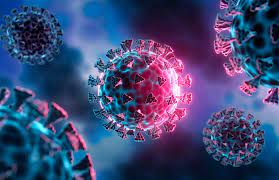
COVID-19 Cases Climb as New Variants Fuel Summer Wave, US Health Officials Warn
Amid scorching summer temperatures driving Americans indoors and millions traveling for vacations and family gatherings, U.S. health officials warned on Monday that COVID-19 infections are once again on the rise.
New data from the U.S. Centers for Disease Control and Prevention (CDC) suggests that a summer wave of COVID-19 is underway, with case counts likely increasing in 39 states and not declining anywhere in the country. Although the CDC no longer tracks COVID cases directly, it estimates the spread of the virus using data on emergency department (ED) visits. Both COVID deaths and ED visits have risen in the past week, while hospitalizations surged 25% from May 26 to June 1, according to the latest CDC data.
“It looks like the summer wave is starting to begin,” Dr. Thomas Russo, chief of infectious diseases at the University at Buffalo Jacobs School of Medicine and Biomedical Sciences, told NBC News.
Several new COVID variants are likely contributing to the summer spike in cases. Dr. Dan Barouch, director of the Center for Virology and Vaccine Research at Beth Israel Deaconess Medical Center in Boston, explained that the uptick coincides with the emergence of new variants, namely KP.2, KP.3, and LB.1. These variants, descendants of JN.1 which dominated this winter, appear to have a competitive edge over previous strains.
KP.2 became the dominant variant last month, only to be overtaken by KP.3 in early June. These, along with a third variant KP.1.1, which shares the same key mutations, now account for around 63% of all COVID infections in the United States, according to CDC data. LB.1, meanwhile, represents another 17.5% of infections and is rapidly growing, suggesting it may soon become dominant.
“It’s sort of the newest kid on the block,” Barouch said, noting that there is still much to learn about LB.1. A preprint study released this month, which has yet to be peer-reviewed, suggests that LB.1 is more infectious and may better evade protection from vaccines or previous infections. “Assuming that preliminary data is true, that it’s more immune-evasive and that it’s more infectious than KP.2 and KP.3, that’s a winning formula to infect more people,” Russo noted.
Experts believe that, in addition to these variants, the trend of people moving indoors to escape the heat and gathering for events like the Fourth of July will likely contribute to the rise in cases.
Russo advised those vulnerable to infection and severe illness, or those planning to attend large gatherings, to consider getting the latest COVID vaccine. He also highlighted the availability of a monoclonal antibody drug called Pemgarda for immunocompromised individuals, as well as the antiviral medication Paxlovid, which can lower the likelihood of hospitalization or death.
For young, healthy individuals, experts suggest waiting for the updated COVID vaccines expected this fall. The U.S. Food and Drug Administration has recommended vaccine manufacturers target the KP.2 variant. The CDC’s Advisory Committee on Immunization Practices is set to meet Thursday to decide who should receive these updated shots.
As COVID-19 cases climb, health officials urge Americans to remain vigilant and consider protective measures, especially as new variants continue to emerge and spread.